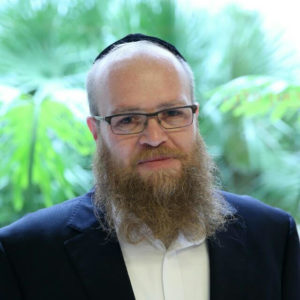Let There Be Light


Rav Reuven Elbaz sounds the call of teshuvah. A conversation of love and light

Photos: Elchanan Kotler, Flash90, Mattis Goldberg, Mishpacha archives
Before there was a teshuvah movement or a Shas party, Rav Reuven Elbaz was a pioneer of the revolution, proven by the thousands of graduates – some second and third generation – of his Ohr Hachaim institutions. But the beis medrash is never as bright as at midnight during Elul, when a thirsting nation of all colors and stripes comes together to bask in the glow of forgiveness
Midnight was well past, a hush had descended over much of Yerushalayim, but in the fortress-like building on Rechov Yoel, it was high noon.
Thousands streamed into the floodlit, concrete expanse of Yeshivat Ohr Hachaim where a meeting of worlds was underway.
As if the traders of the Mahaneh Yehudah shuk had decamped en masse, hundreds of jeans-clad men with white kippot perched on shaven heads stood alongside yeshivah bochurim and businessmen from Panama and Paris.
Even the head of IDF military intelligence was said to be there, soaking up the elevation of Selichot at one of Israel’s most famous destinations.
“Ben Adam mah lecha nirdam…” Like a full-throated rendition of the national anthem, the opening piyut boomed off the vast crowd, rolling along the packed corridors, down the stairs and out into the Yerushalmi night air.
For almost an hour, the cavernous hall was filled with a heady mixture of fervor and melody — Hashem, Hashem alternating with favorites like Adon Haselichot.
Suddenly, the crowd took their places and a hush descended as a patriarchal figure took the microphone.
Rav Reuven Elbaz, rosh yeshivah of Ohr Hachaim institutions and a pioneer of Israel’s teshuvah movement, gazed out over the packed hall, smiling in recognition to people in the crowd who caught his eye.
Then came the unexpected.
As if he hadn’t read the audience, or got the memo that outreach is about inspiration and avoiding uncomfortable topics, Rav Elbaz began to speak — about modesty.
“Jewish women, Jewish daughters,” he cried emotionally to his all-male audience. “Throughout history, we’ve always kept tzniyut.
“In the Middle Ages there was a girl who was sentenced to death by being dragged by horses, and she amazed her captors by asking for pins to attach the clothes to her body so that she shouldn’t be disgraced.
“But look at our generation,” continued the Rosh Yeshivah, eyes shut as if in pain, “how low we’ve fallen!”
For anyone looking to understand why thousands of Israelis have given up secular life over the past 50 years after hearing Rav Reuven Elbaz, the answer lies in the deep and genuine pain that pours from his heart at the thought of Jews distanced from the Torah.
Oops! We could not locate your form.







